The following review of the band Ergo’s recent September 27th, 2012 appearance in Philadelphia was written by Penn graduate student in composition Erica Ball. The mini concert and discussion was part of the Department of Music’s The Public Lives of Music series.–Editor
~Ergo, the trio of Brett Sroka on trombone and electronics, Sam Harris on piano and Rhodes, and Shawn Baltazor on drums, brought their genre blending jazz to Penn’s Music Department last Thursday evening.
Ergo’s concert and discussion with Penn department graduate students, Daniel Villegas Velez and Daniel Shapiro, as part of our “Public Lives of Music” series which aims to bring “music making into the academic setting, and intellectual discussion into music making.” While firmly rooted in the jazz tradition, Ergo’s music crosses multiple boundaries – between jazz and electronic, between fully notated works and ensemble composition/improv, between free jazz and bebop. The evening was a lively mix of innovative music and probing intellectual discussion.
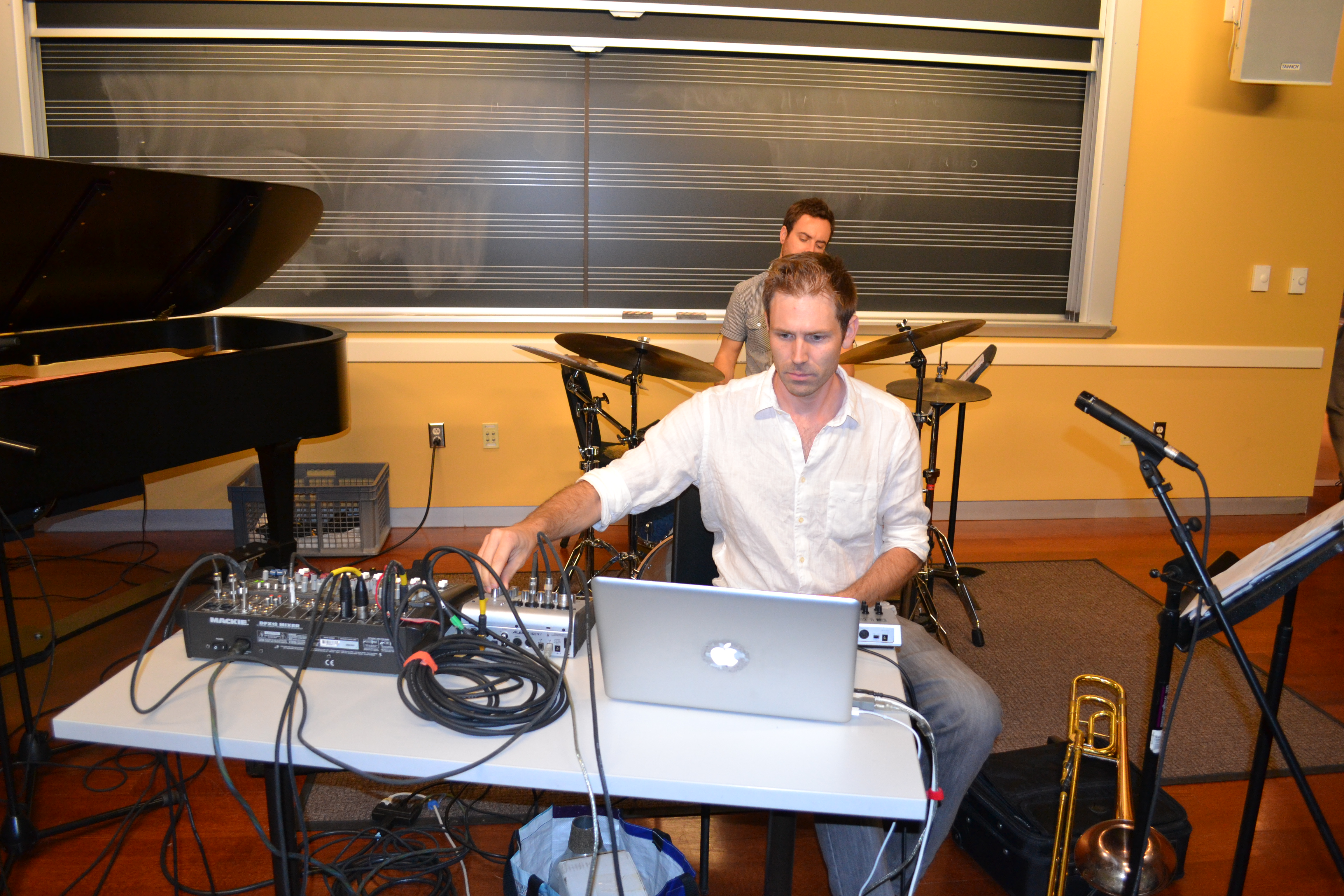 In my eyes the event highlighted the sort of insights that can only be made when confronted with live music making. Using a press quote about Brett Sroka that labeled his use of MaxMSP live processing as “computerized space-dub”, the discussion quickly veered off to the familiar musicology topic of instruments and embodiment. Why, we asked aloud, are we constantly drawing a line between acoustic and electronic instruments?
In my eyes the event highlighted the sort of insights that can only be made when confronted with live music making. Using a press quote about Brett Sroka that labeled his use of MaxMSP live processing as “computerized space-dub”, the discussion quickly veered off to the familiar musicology topic of instruments and embodiment. Why, we asked aloud, are we constantly drawing a line between acoustic and electronic instruments?
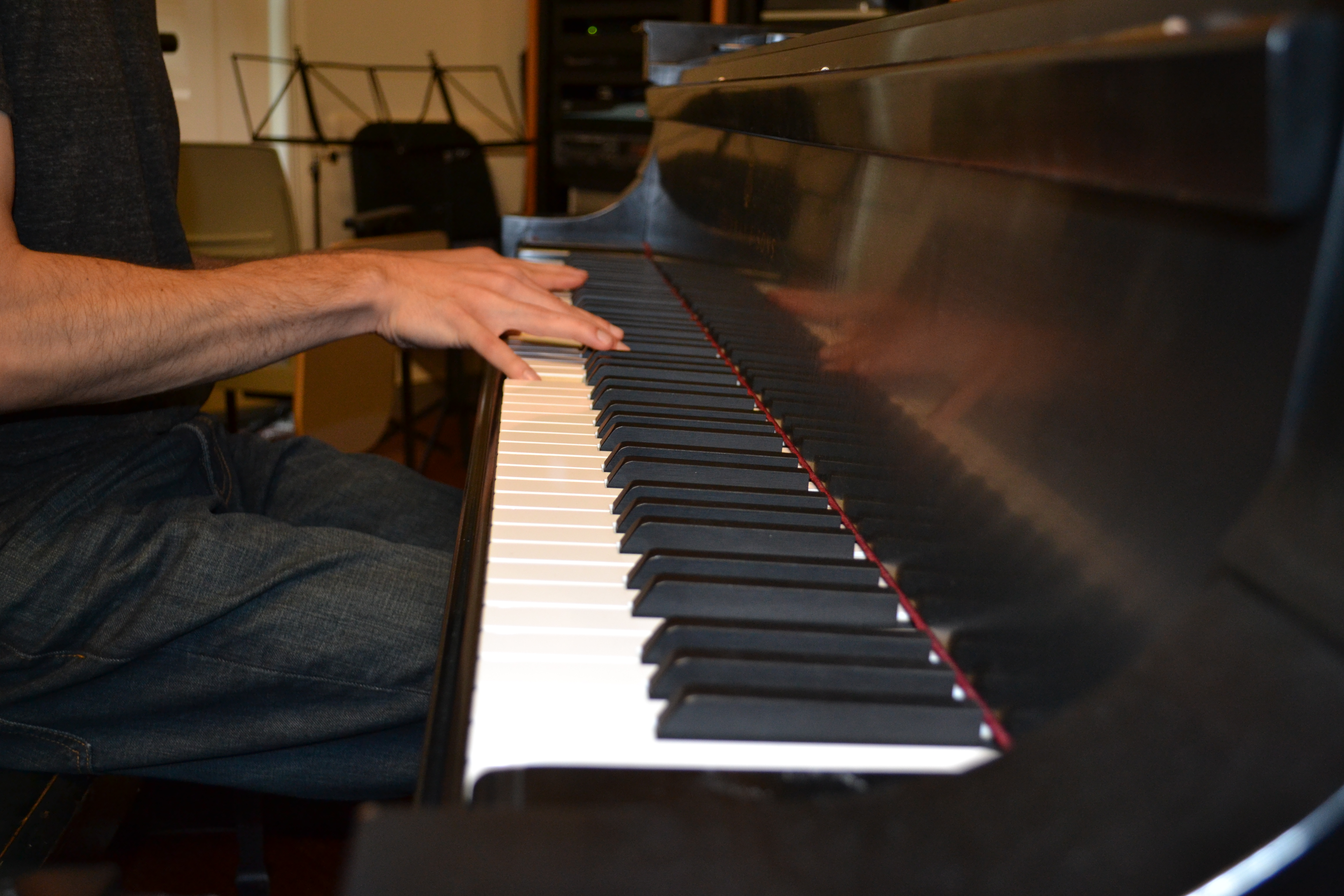 Throughout music history there has always been a divide between the most commonly used instruments of the time and those instruments that required more intermediary steps to produce sound. Difficult as it may be to imagine from our current perspective on sound production, there was once a separation between the human voice and acoustic instruments. Our tendency to separate the familiar and the unfamiliar is what constantly creates this discord amongst methods of sound production. As an audience member, the physicality of the voice is recognizable as it is the instrument that we all use on a daily basis. When instruments were first used to produce sound, the idea of an intermediary device must have been quite foreign; however, now acoustic instruments are so common place and engrained within our culture that we can associate with their physicality regardless of our personal experiences of playing such instruments.
Throughout music history there has always been a divide between the most commonly used instruments of the time and those instruments that required more intermediary steps to produce sound. Difficult as it may be to imagine from our current perspective on sound production, there was once a separation between the human voice and acoustic instruments. Our tendency to separate the familiar and the unfamiliar is what constantly creates this discord amongst methods of sound production. As an audience member, the physicality of the voice is recognizable as it is the instrument that we all use on a daily basis. When instruments were first used to produce sound, the idea of an intermediary device must have been quite foreign; however, now acoustic instruments are so common place and engrained within our culture that we can associate with their physicality regardless of our personal experiences of playing such instruments.
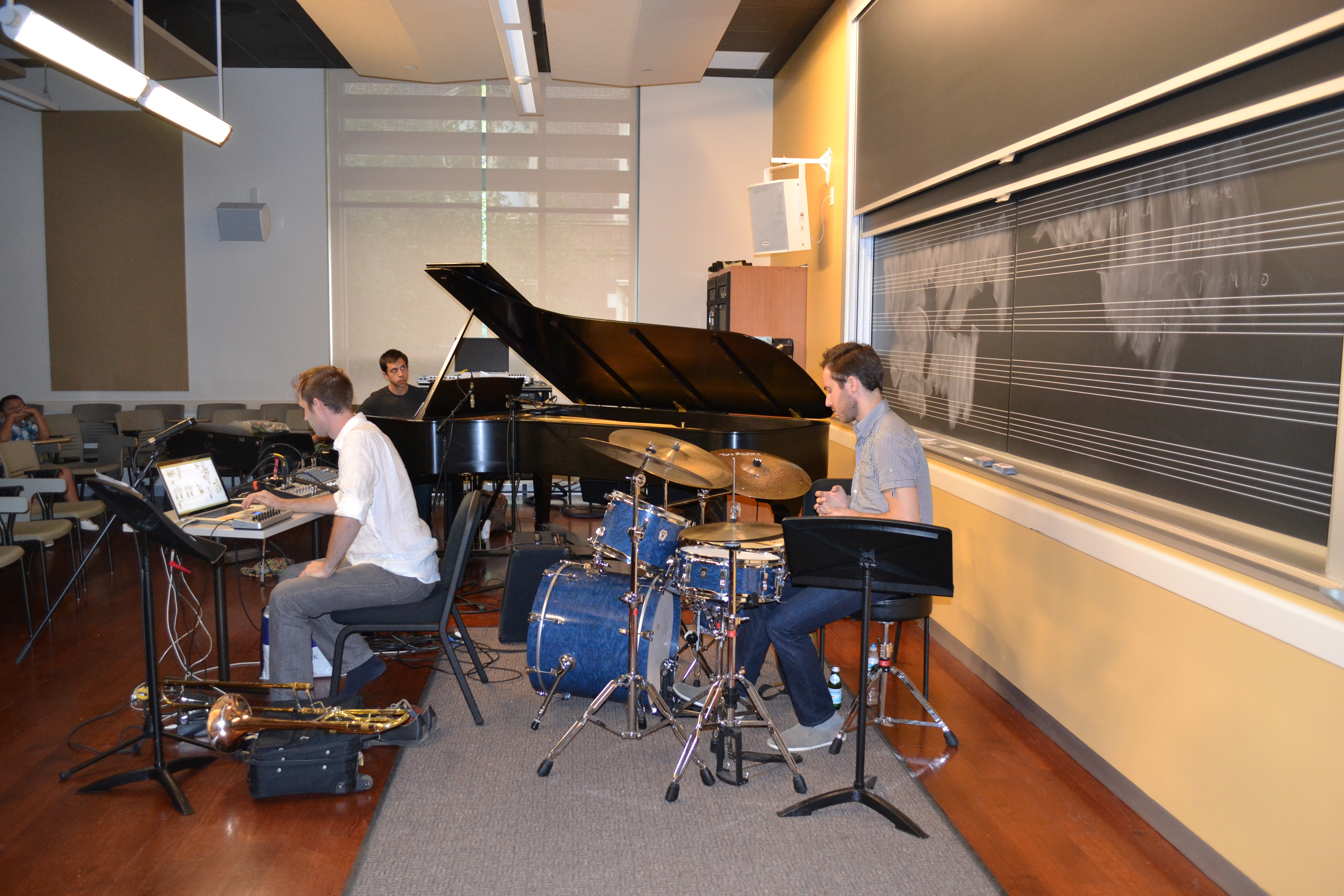 The computer has only just begun to take on the identity of ‘instrument’ within the last fifteen to twenty years, and our familiarity with the computer as such has yet to reach a level which would allow the average audience member to appreciate its method of sound production in the same way that we appreciate the violin. Adding further distance between the computer as an instrument and the audience’s perception of it is the mask of the screen and the reduction of human movements to clicks of the mouse, twists of knobs, and pressing of keys.
The computer has only just begun to take on the identity of ‘instrument’ within the last fifteen to twenty years, and our familiarity with the computer as such has yet to reach a level which would allow the average audience member to appreciate its method of sound production in the same way that we appreciate the violin. Adding further distance between the computer as an instrument and the audience’s perception of it is the mask of the screen and the reduction of human movements to clicks of the mouse, twists of knobs, and pressing of keys.
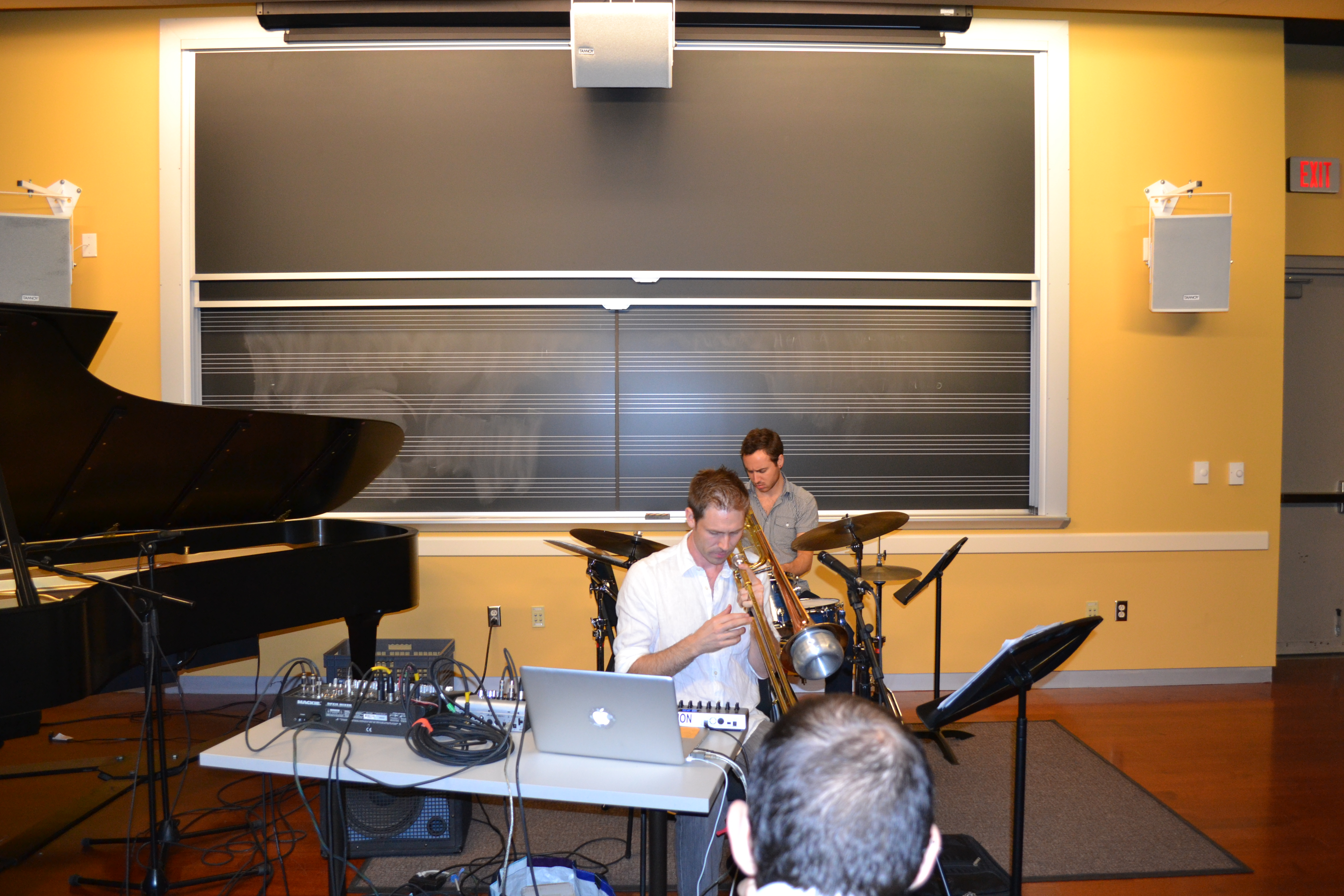 Having attended quite a few concerts in recent months in which the computer was featured as an instrument, I believe now that the visual element plays heavily into my perception of the computer as an instrument. The performances that take me beyond the novelty of electronics have little to do with the actual sounds produced, but more to do with the movement of the performer as they play the computer. Brett’s performance on the computer was thoroughly convincing of the computer as instrument. The pulse of the music was visible in his movements, intensity could be observed in the scale of his swaying, and there was clear communication between Brett on the computer and the other musicians. As an audience member I was drawn into the music by Brett’s performance and not distracted by the all too common “how is the computer doing that?!” types of question.
Having attended quite a few concerts in recent months in which the computer was featured as an instrument, I believe now that the visual element plays heavily into my perception of the computer as an instrument. The performances that take me beyond the novelty of electronics have little to do with the actual sounds produced, but more to do with the movement of the performer as they play the computer. Brett’s performance on the computer was thoroughly convincing of the computer as instrument. The pulse of the music was visible in his movements, intensity could be observed in the scale of his swaying, and there was clear communication between Brett on the computer and the other musicians. As an audience member I was drawn into the music by Brett’s performance and not distracted by the all too common “how is the computer doing that?!” types of question.
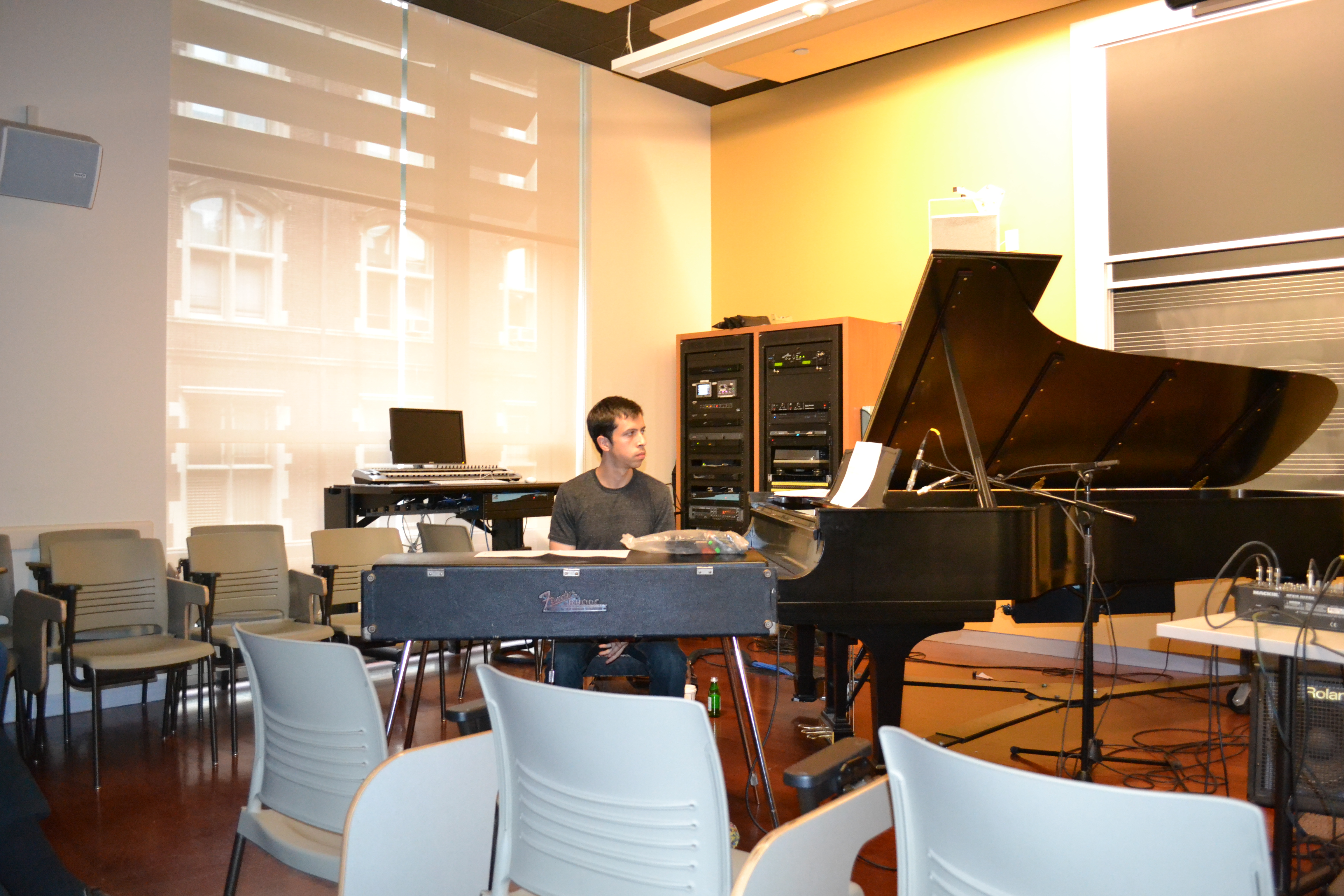 Throughout the course of the evening, Ergo played three works which took their titles from the same Emily Dickinson poem As subtle as tomorrow.
Throughout the course of the evening, Ergo played three works which took their titles from the same Emily Dickinson poem As subtle as tomorrow.
As subtle as tomorrow
That never came,
A warrant, a conviction,
Yet but a name.
The three works were played out of order in relation to the poem – As tomorrow, Yet but, That never came – but the ordering presented a clear musical arc with the soulfully lyric trombone first heard in As tomorrow, returning in That never came. Yet but was a distinct break from thick drone driven sound world of As tomorrow, as the composition focused on a repetitive piano lick with clear rhythmic structure that was punctuated by silence. The pitches from the piano lick became progressively more distorted, first by cluster chords in the piano, then by ringing cymbals, and finally by the introduction of live processed sounds at the very end of the song. That never came was built on a very steady pulse reminiscent of the busy signal on a telephone over which the trombone line from As tomorrow returned. (Descriptions of music can never do it justice – so head over to Ergo’s site and hear their music for yourself.)
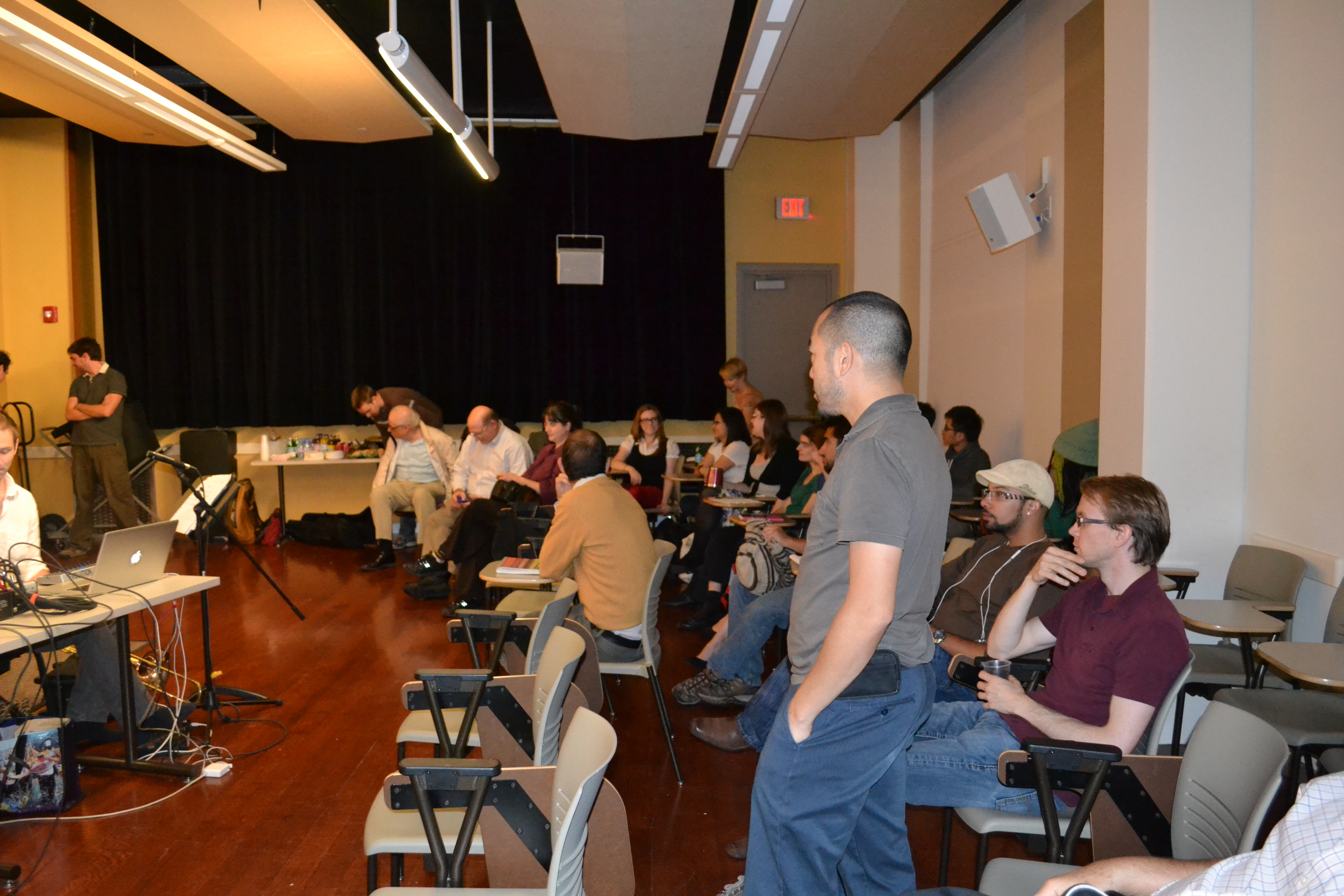 It is fitting that the band should choose snippets of Emily Dickinson as the titles for their songs. Dickinson was an innovator, writing on traditional poetic themes while challenging the traditional ideals of poetic meter, capitalization, and form. The shadows of bebop, Coltrane, Sun Ra, and other jazz greats are present in Ergo’s music, but Ergo takes these more traditional jazz sounds to unexplored territories with the addition of drones, unconventional forms, and live processing.
It is fitting that the band should choose snippets of Emily Dickinson as the titles for their songs. Dickinson was an innovator, writing on traditional poetic themes while challenging the traditional ideals of poetic meter, capitalization, and form. The shadows of bebop, Coltrane, Sun Ra, and other jazz greats are present in Ergo’s music, but Ergo takes these more traditional jazz sounds to unexplored territories with the addition of drones, unconventional forms, and live processing.
Ergo closed out the evening with Let’s – a high-energy song that opened with an improvisatory section by Sam on the Rhodes and Brett on computer. Shawn added in a driving rift on the toms that emulated the electronic pulsing drones found in the group’s previous songs. Let’s was a slow build up in intensity and motion to a high point which burst like a water balloon in slow motion, drops of sound hitting the audience before slowly fading into the night.
Tags: Brett Sroka, Emily Dickinson, Ergo, Erica Ball, Public Lives of Music, Sam Harris, Shawn Baltazor, Univeristy of Pennsylvania


 Share On Facebook
Share On Facebook Tweet It
Tweet It



